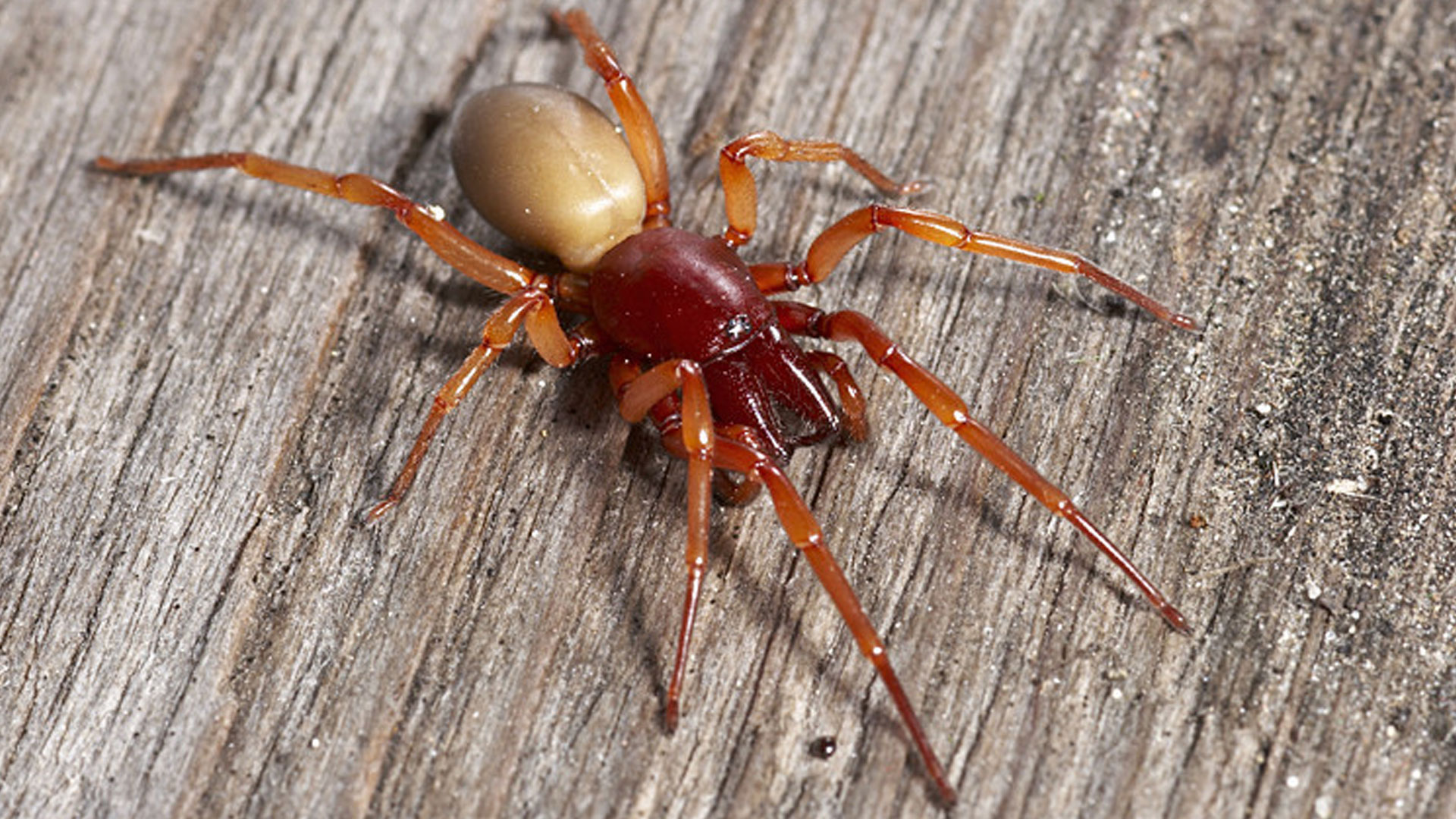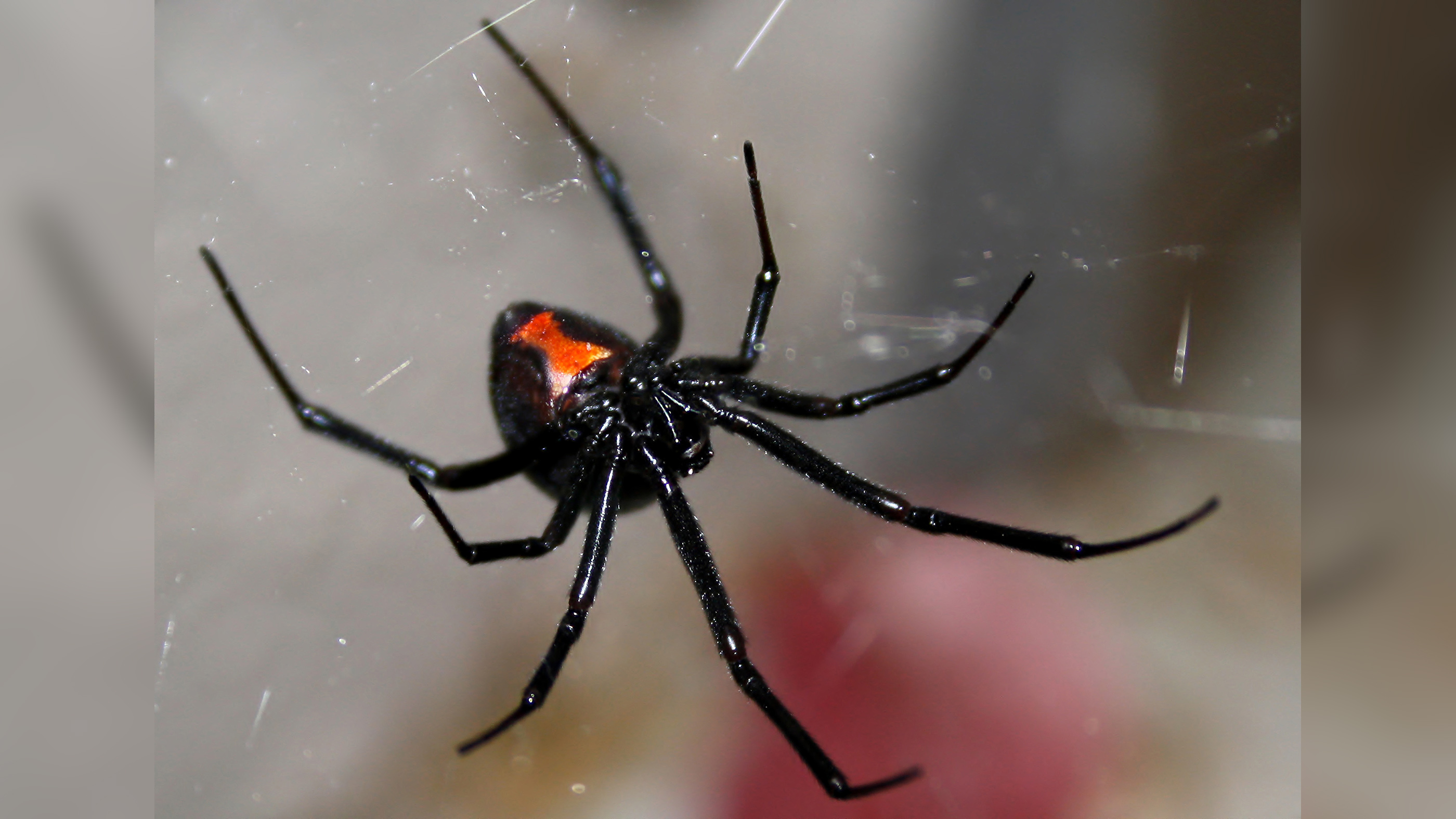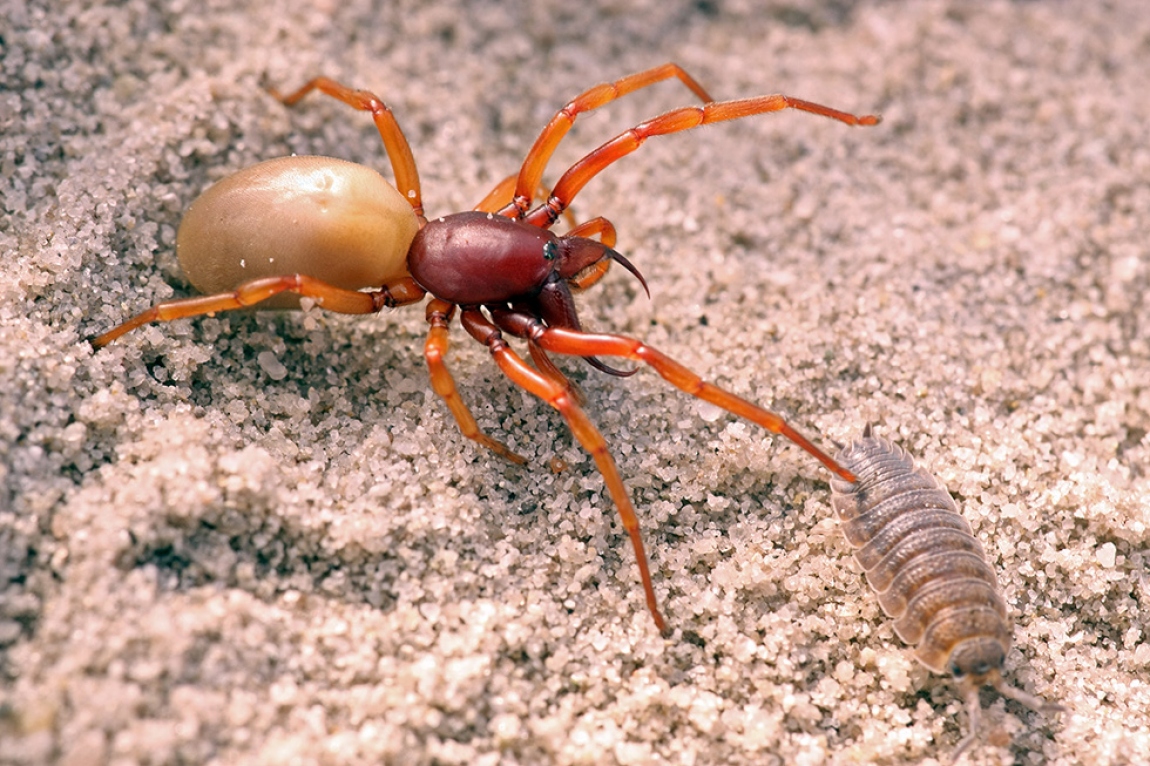Spiders are some of the most successful arthropods on the planet, having colonized every continent except Antarctica. While not all spiders are venomous, some can be deadly to humans. In Nebraska, there are several species of spiders that are considered dangerous to humans.
In this article, we will explore the top 5 largest and most dangerous spiders in Nebraska. From the highly venomous black widow spider to the ambush predator woodlouse hunting spider, we will provide you with all the information you need to stay safe this summer.
You are reading: The Top 5 Largest Most Dangerous Spiders In Nebraska

Top 5 Largest Most Dangerous Spiders In Nebraska
Black Widow Spider

The black widow spider is a medically important spider found in Nebraska. Adult female black widows are jet black with a distinct red hourglass shape on the underside of the abdomen and are about 1/2 inch long. They create tangled, messy webs of sticky silk and are highly venomous.
The venom of a black widow spider can cause muscle pain, spasms, and cramps, as well as other symptoms such as nausea, vomiting, and difficulty breathing. While black widows are only occasionally found in Nebraska, they are considered the most dangerous spider species in the state.
Brown Recluse Spider
The brown recluse spider is a venomous spider that can be found in Nebraska. They are plain, lackluster spiders that are no longer than 1/2 inch in length (not including the legs), with long, slender legs. They are uniformly a light brown color, with a dark brown violin-shape on the carapace.
Read more : Top 8 Smallest Sharks In The World
The entire body is covered with hairs, but there are no spines, patterns, stripes, bands, or spots on either the abdomen or legs. Brown recluse spiders are shy, non-aggressive, secluded, and avoid conflict. They are found in seldom-disturbed areas such as attics, crawlspaces, cellars, woodpiles, basements, garages, closets, and in cardboard boxes with clothing, shoes, and other stored items.
Brown recluse spiders are as their name implies, reclusive and avoid human contact. The venom of a brown recluse spider can cause a range of symptoms, including pain, itching, fever, and in rare cases, necrosis (tissue death).
While brown recluse spiders are not commonly found in Nebraska, they are still considered the second most dangerous spider species in the state.
Woodlouse Hunting Spider

The woodlouse hunting spider, also known as the pillbug hunter or woodlouse spider, is a nocturnal hunting spider that is commonly found in Nebraska. Here are some characteristics and behaviors of the woodlouse hunting spider:
– Appearance: The woodlouse hunting spider has a distinctive dark red body and legs, with a shiny mahogany abdomen. They have large, powerful chelicerae (fangs) that are used to capture and kill their prey.
– Habitat: Woodlouse hunting spiders are usually found under logs, rocks, bricks, plant pots, and in leaf litter in warm places, often close to woodlice. They spend the day in a silken retreat made to enclose crevices in partially decayed wood, but sometimes construct tent-like structures in indents of various large rocks.
– Behavior: Woodlouse hunting spiders are nocturnal and do not spin webs. Rather than spinning their webs at night, they use this time to search warm places for prey. They are helpful outdoors because they kill woodlice. While they are not dangerous to humans, they can bite if provoked.
Overall, the woodlouse hunting spider is an interesting and beneficial spider species that is commonly found in Nebraska.
Tiger Wolf Spider
The tiger wolf spider, also known as Tigrosa aspersa, is a species of wolf spider that is commonly found in Nebraska. Here are some characteristics and behaviors of the tiger wolf spider:
– Appearance: The tiger wolf spider has a distinctive pattern of stripes and spots on its body, which gives it its name. They are typically brown, black, and tan in color and can range in size from 11mm to 31mm in length.
– Habitat: Tiger wolf spiders are typically found in grassy areas, fields, and forests. They do not create webs, but instead hunt for prey on the ground. Females will make burrows under rocks or boards.
– Behavior: Tiger wolf spiders are solitary and live and hunt alone. They are usually active at night, during which they hunt for prey. While they are hunters, wolf spiders are also preyed upon by other organisms such as praying mantises, birds, wasps, small reptiles, and even other spiders. Tiger wolf spiders are usually not aggressive and will not bite unless readily provoked.
Overall, the tiger wolf spider is an interesting and beneficial spider species that is commonly found in Nebraska.
Dark Fishing Spider
Read more : Discover The Top 8 Most Expensive Types Of Crab
The dark fishing spider, also known as Dolomedes tenebrosus, is a species of fishing spider found in the United States and Canada. Here are some characteristics and behaviors of the dark fishing spider:
– Appearance: The dark fishing spider is mottled black and brown, with few white markings. The abdomen has dark W-shaped patterns on the upper surface. The legs are often held almost straight out. Female bodies are 15–26 mm; males are 7–13 mm. Legs range from 50–90 mm.
– Habitat: Dark fishing spiders are found in wooded areas and dwell on trees. They are also found in swamp, pond, and lake margins, where they may be found on tree trunks, rocks, logs, and similar situations. Individuals are also found in dark and damp situations beneath bridges or culverts, or in rock piles. Although they are often found near water, this species is not as well adapted to an aquatic environment as some other Dolomedes species.
– Behavior: Dark fishing spiders are able to bite humans but will run from people. In most cases, the bite is no more severe than a bee or wasp sting. They are opportunistic, generalist feeders, and they have even been known to consume slugs despite their sticky mucous. Dark fishing spiders are not aggressive and will not bite unless provoked.
Overall, the dark fishing spider is an interesting and relatively harmless spider species that is found in Nebraska.
FAQS
1. What are the top 5 largest and most dangerous spiders in Nebraska?
The top 5 largest and most dangerous spiders in Nebraska are:
1. Black Widow Spider
2. Brown Recluse Spider
3. American Grass Spider
4. Black and Yellow Garden Spider
5. American Nursery Web Spider
2. Why are black widow spiders considered the most dangerous in Nebraska?
Black widow spiders are considered the most dangerous spider species in Nebraska due to their highly venomous bite. The venom of a black widow spider can cause muscle pain, spasms, cramps, and other symptoms such as nausea, vomiting, and difficulty breathing.
3. What are the characteristics of the brown recluse spider?
Brown recluse spiders are venomous and can be found in Nebraska. They are plain, lackluster spiders that are no longer than 1/2 inch in length, with long, slender legs. They are uniformly a light brown color, with a dark brown violin-shape on the carapace. The entire body is covered with hairs, but there are no spines, patterns, stripes, bands, or spots on either the abdomen or legs.
4. Are the woodlouse hunting spiders dangerous to humans?
Woodlouse hunting spiders, also known as pillbug hunters or woodlouse spiders, are not dangerous to humans. While they can bite if provoked, their bites are not considered medically significant.
5. What are the characteristics and behaviors of the tiger wolf spider?
The tiger wolf spider, also known as Tigrosa aspersa, is a species of wolf spider commonly found in Nebraska. They have a distinctive pattern of stripes and spots on their body and are typically brown, black, and tan in color. Tiger wolf spiders are not aggressive and will not bite unless readily provoked. They are usually active at night and hunt for prey on the ground.
6. Are dark fishing spiders dangerous to humans?
Dark fishing spiders, also known as Dolomedes tenebrosus, are not considered dangerous to humans. While they are able to bite, they will usually run away from people. In most cases, their bites are no more severe than a bee or wasp sting.
Source: https://petstutorial.com
Category: Animals










